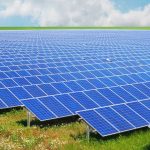Some countries have changes their nuclear policy to either to phase-out or phase-down after Fukushima incident due to safety concerns. However, many of the countries are still continuing to develop nuclear power plants with no better substitute for nuclear energy. [1] Renewable energy, known to be more safe than nuclear energy, is extensively being researched, but it still has long way to go in order to completely occupy the energy production market. Hybrid nuclear-renewable energy systems are being proposed as the next generation energy plant trying to reap only the benefits of nuclear energy and renewable energy. [2] Then what are the drawbacks of both energies and what can we gain from combining them?
Renewable Engergy
Renewable energies are energies gained from renewable energy sources like hydropower, geothermal, wind, solar, and marine-energy. [3,4] Major drawback of renewable energies are that it is highly dependent on geographical locations. Renewable energy sources can only be mined at certain locations, putting heavy restrictions on where the power plants can be built. For example, Crescent Dunes Solar Energy Project, 24-hours solar thermal power plant built in Nevada was possible due to enough solar energy, with its location being in the middle of the dessert. Moreover, although renewable energy is thought to be environmental friendly, however, mining of renewable energy inflicts stress on the environment as well. Even just building of renewable energy power plant can have effect on surrounding habitats, destroying the wild life nearby. Also, renewable energy often requires large land footprint, it inherently has effect on the surroundings. Its intermittent energy production is also an issue. Renewable energies often cannot be produced continuously. Wind energy simply cannot be mined if there are no wind blowing. [5]
Nuclear Engergy
Nuclear energy, although it has been an attractive carbon-free energy source for a while, public has always been ambivalent towards nuclear energy. (Fig. 1) Moreover, nuclear waste disposal and radiation problems are critical issues as well.
Hybrid Nuclear-Renewable Energy Systems
Nuclear energy can be combined with, but not limited to, solar, wind and geothermal energy. Combining these two different energies comes with many benefits. [6] First, most apparent advantage is reduction of greenhouse gas emissions. Second is the increase energy efficiency for power generation. Hybrid nuclear-solar energy system has been calculated that this hybrid system bumps efficiency of nuclear power plant to 37.5%. [5] Last but not least, is the high system reliability. Although renewable energy has intermittent production of energy, since it is backed up with nuclear energy, it is guaranteed continuous production of energy.
Conclusion
There are certainly drawbacks for the hybrid nuclear-renewable energy systems as well. However, both renewable and nuclear energy has potential to be an alternative to fossil fuels. Therefore, is definitely one of the most promising power system to be studied although there are issues to be solved.
© Hyo-Jin Kim. The author warrants that the work is the author’s own and that Stanford University provided no input other than typesetting and referencing guidelines. The author grants permission to copy, distribute and display this work in unaltered form, with attribution to the author, for noncommercial purposes only. All other rights, including commercial rights, are reserved to the author.





